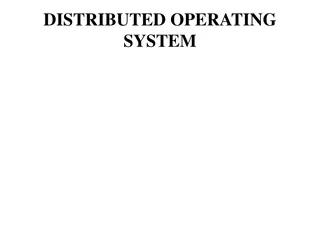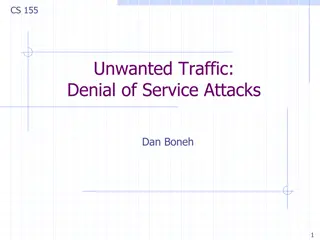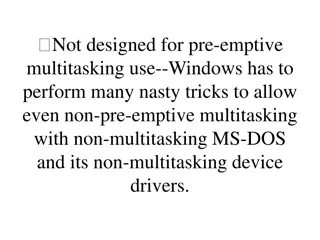Crafting a Publishable Poem: Dos and Don'ts
Handbook defining a poem as a literary composition that uses poetic language to treat subjects uniquely. Explore the characteristics of a publishable poem, including the importance of precise, evocative, and creative language, a pleasing form, and avoiding sentimentality and clichés.
Download Presentation

Please find below an Image/Link to download the presentation.
The content on the website is provided AS IS for your information and personal use only. It may not be sold, licensed, or shared on other websites without obtaining consent from the author.If you encounter any issues during the download, it is possible that the publisher has removed the file from their server.
You are allowed to download the files provided on this website for personal or commercial use, subject to the condition that they are used lawfully. All files are the property of their respective owners.
The content on the website is provided AS IS for your information and personal use only. It may not be sold, licensed, or shared on other websites without obtaining consent from the author.
E N D
Presentation Transcript
Statistical developments and SDG progress in the Asia Pacific Region Training workshop on SDG Indicator 12.c.1 1-3 June 2022 (216202Virtual) Alick Nyasulu Statistician ESCAP Statistics Division
Outline Basis for capacity building in Asia-Pacific Regional initiatives in Asia-Pacific SDG Progress in Asia-Pacific
Asia-Pacific has two agreements to advance official statistics for the 2030 Agenda for Sustainable Development A Collective Vision and Framework for Action A Declaration on Navigating Policy with Data to Leave No One Behind Basis for capacity building in Asia-Pacific The Collective Vision and Framework for Action focuses on strengthening statistical capacity to produce and disseminate official statistics The Navigating Policy with Data to Leave No One Behind focuses on strengthening National Statistical Systems (NSS)
Basis for Capacity Building Activities in Asia-Pacific A Collective Vision and Framework for Action Integrated statistics for integrated analysis Modernizing statistical business processes Engaging users and investing in statistics Assuring quality and instilling trust in statistic Having requisite skills set by 2030, national statistical systems are enabled and empowered to lead development of and to deliver innovative, trusted and timely products and services for urgently needed and evolving statistical requirements of Agenda 2030.
Basis for Capacity Building Activities in Asia-Pacific Declaration on Navigating Policy with Data to Leave No One Behind Linking policy with data is needed for achieving SDGs and requires dialogue between users and producers. the realization of the collective vision and Investments in NSS need to correspond to resource requirements. framework for action transcends the capabilities of national statistical systems and requires a whole-of-government approach with adherence to three principles NSOs and all government statistical units need to operate as one integrated system.
Capacity building and technical cooperation programmes in the region through: Regional Programme for the Improvement of Economic Statistics in Asia and the Pacific Regional Steering Group on Population and Social Statistics Technical Working Group on Disaster-related Statistics in Asia and the Pacific Network for the Coordination of Statistical Training in Asia and the Pacific. The Regional Steering Group for Civil Registration and Vital Statistics in Asia and the Pacific Community of Practice on Data Integration Global Ocean Accounts Partnership Regional initiatives in Asia-Pacific These initiatives are all aligned with the Collective Vision and Framework for Action and the Declaration onNavigating Policy with Data to Leave No One Behind in the context of agenda 2030
SDG Progress in Asia-Pacific Data availability for SDG indicators 250 106 96 71 39 25 200 83 80 Number of indicators 64 150 No data 53 Insufficient data 63 123 Sufficient data 112 100 97 83 63 50 0 2017 2018 2019 2020 2021
Data availability for indicators of the 17 SDGs 1 10 2 1 2 8 5 1 3 21 7 4 6 6 5 2 11 1 Sustainable development goal 6 8 3 7 6 8 9 7 9 Sufficient 8 4 Insufficient 10 9 4 1 No Data 11 5 2 7 12 5 8 13 4 1 3 14 2 6 2 15 10 2 2 16 5 13 6 17 16 5 3 0 5 10 15 20 25 30 Number of indicators
Expected years to achieve the SDGs at the current pace Expected year to achieve the SDGs at current pace Overall progress so far 2052 2065 2057 2017 4.4% 2019 9% 2021 11.9%
Progress in Asia-Pacific 2022 TARGET 2030 2015 2021 1 No poverty 2 Zero Hunger 3 Good health and well-being 4 Quality education 5 Gender equality 6 Clean water and sanitation 7 Affordable and clean energy 8 Decent work and economic growth 9 Industry, innovation and infrastructure 10 Reduced inequalities 11 Sustainable cities and communities 12 Responsible consumption and production 13 Climate action 14 Life below water 15 Life on land 16 Peace, justice and strong institutions 17 Partnerships for the Goals Progress Regression Insufficient indicators Evidence strength






















